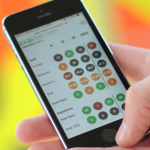 We live in an age of unparalleled information about health and wellbeing, yet we are also living in an age of chronic diseases brought about by poor lifestyle choices. I’ve written a few times before about various studies looking at how to make health information more digestible, whether it’s through the use of humor or adopting some of the ad industries tips for making catchy messaging.
We live in an age of unparalleled information about health and wellbeing, yet we are also living in an age of chronic diseases brought about by poor lifestyle choices. I’ve written a few times before about various studies looking at how to make health information more digestible, whether it’s through the use of humor or adopting some of the ad industries tips for making catchy messaging.
There have also been a number of studies highlighting the importance of social networks for such dissemination, with a growing appreciation for the importance of targeting specific individuals within a community.
A recent study wanted to explore whether the volume or length of information plays a part in how digestible it is. With so much information available online, the researchers wanted to try and identify a swee spot, after which extra information hinders rather than helps.
Too much information
The key to finding the sweet spot seems to depend very much on the health objective you have in mind. For instance, giving a large amount of information is fine if the goal is to get people to remember large amounts of interchangeable behaviors. If the goal is for them to remember a complete set of recommendations however, it’s better to present them with a smaller number.
“The best number of health behaviors to recommend seems to depend on the goal of an intervention,” the authors say. “If the goal is to communicate as many recommendations as possible, then go for a long list of behaviors. But if the goal is to implement behaviors, then the best strategy may be to convey a lower number of recommended behaviors.”
The study saw participants presented with a list of health recommendations, with the number ranging from two to 20. They were then later quizzed to test their recall of the recommendations.
“When multiple health recommendations are necessary, knowing the influence of the number of recommendations on recall and intended compliance is critical,” the authors say.
The team hope that their findings will prove useful in a range of health fields, whether it’s psychotherapists changing the behavior of patients with specific homework to micro-changes to behavior via text messaging or other small interventions.
Whether it’s the length of the message or the way it’s constructed, we are gaining a better understanding of what works and what doesn’t, which has to be a good thing if we’re to drive the kind of behavior changes that we aspire to.